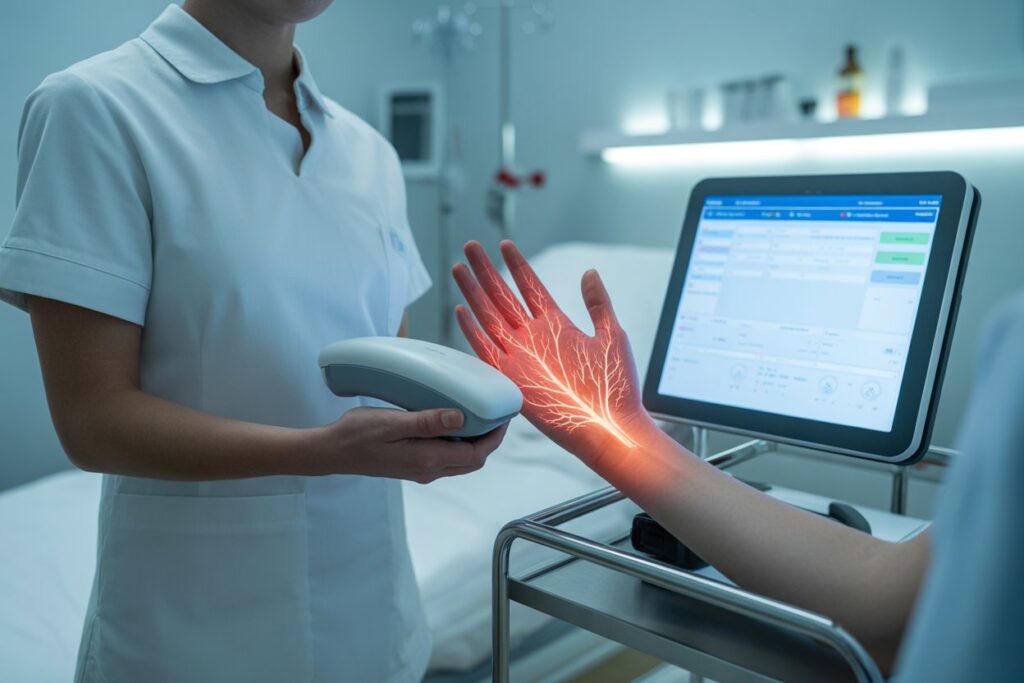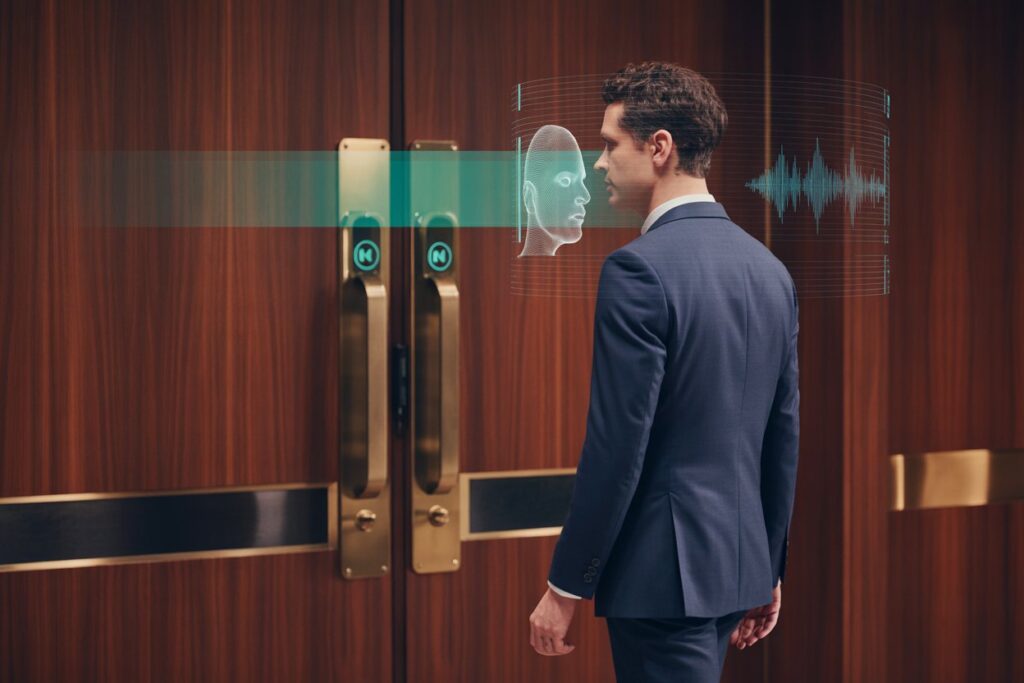Biometric security devices represent a paradigm shift in how we protect identities, assets, and data in an increasingly digital world. By leveraging unique physiological or behavioral traits—such as fingerprints, facial features, iris patterns, or even gait— these devices provide a seamless, password-free alternative to traditional authentication methods. Unlike keys or codes that can be lost, shared, or guessed, biometrics tie security directly to the individual, offering unparalleled convenience and reliability. As cyber threats escalate and physical access controls demand greater precision, biometric systems have become indispensable across sectors from consumer electronics to high-stakes government facilities.
The global biometrics market, encompassing these devices and their supporting technologies, was valued at USD 47.2 billion in 2024 and is projected to surge to USD 53.2 billion in 2025, expanding at a compound annual growth rate (CAGR) of 12.3% to reach USD 84.5 billion by 2029. This robust growth is fueled by advancements in artificial intelligence (AI), machine learning (ML), and contactless solutions, particularly in response to post-pandemic hygiene demands and rising identity fraud. In 2025, innovations like multimodal biometrics—combining multiple traits for enhanced accuracy—and privacy-centric designs are at the forefront, promising to redefine security. However, with great power comes significant responsibility: ethical concerns, data privacy risks, and technical challenges persist. This article delves into the types of biometric security devices, their applications, advancements, challenges, and societal implications, providing a comprehensive overview of how these technologies are shaping a safer tomorrow.
The Fundamentals of Biometric Security Devices
What Are Biometric Security Devices?
Biometric security devices are hardware and software systems that capture, analyze, and verify an individual’s unique biological or behavioral characteristics to grant or deny access. At their core, these devices consist of sensors (e.g., cameras for facial recognition or scanners for fingerprints), processors for real-time matching against stored templates, and secure storage mechanisms to protect sensitive data. The process involves enrollment—where a user’s biometric template is created and encrypted—followed by authentication, where live scans are compared to the template using algorithms.
Unlike static credentials, biometrics are inherent and difficult to replicate, with false acceptance rates (FAR) as low as 1 in 1 million for advanced systems like iris scanners. In 2025, these devices are increasingly embedded in everyday items: smartphones, smartwatches, door locks, and even vehicles. For instance, IDEMIA’s multi-factor biometric system combines facial and fingerprint recognition, boosting security by 30% in high-stakes environments. Key advantages include speed (under 1 second for verification) and user-friendliness, but they demand robust safeguards against spoofing—using photos or masks to fool scanners.
The Evolution of Biometric Security
Biometrics trace their roots to ancient practices like fingerprinting in Babylonian clay tablets around 2000 BCE, but modern devices emerged in the 1960s with the first automated fingerprint identification systems (AFIS). The 1990s saw iris and retinal scanners gain traction in military applications, while the 2010s brought consumer adoption via Apple’s Touch ID in 2013. By 2025, the field has matured into AI-enhanced ecosystems, with contactless biometrics dominating due to hygiene concerns post-COVID-19.
The shift from single-modality (e.g., fingerprint-only) to multimodal systems reflects this evolution, integrating traits for 99.9% accuracy. Regulatory frameworks, like the EU’s AI Act and GDPR, now mandate transparency in biometric deployments, while blockchain integration ensures decentralized, tamper-proof storage. From rudimentary scanners to edge-computing devices processing data on-site, biometrics have transitioned from niche tools to ubiquitous guardians of identity.
Types of Biometric Security Devices
1. Fingerprint Scanners
Fingerprint recognition remains the most prevalent biometric method, capturing ridge patterns via optical, capacitive, or ultrasonic sensors. Ultrasonic scanners, like those in Samsung’s Galaxy S25, use sound waves for 3D imaging under the skin, achieving sub-0.1% error rates even with wet or dirty fingers. Devices range from in-display smartphone sensors to standalone access controllers for doors.
Applications:
- Consumer Devices: Unlocking phones or authorizing payments.
- Enterprise: Secure logins in offices or ATMs.
- Border Control: Rapid passenger screening.
In 2025, Suprema’s BioStar Air integrates fingerprint tech with cloud access, eliminating on-premise servers for scalable security. Despite affordability (under $50 per unit), challenges include spoofing with gelatin molds, mitigated by liveness detection.
2. Facial Recognition Systems
Facial recognition devices employ cameras and AI to map over 80 nodal points on the face, from eye distance to jawline. Advanced 3D systems, like those from NEC Corporation, use infrared for depth mapping, resisting photo spoofs with 99.99% accuracy. Contactless and versatile, these are ideal for high-traffic areas.
Applications:
- Airports: TSA’s CAT-2 machines verify passports via facial scans, processing millions daily.
- Retail: Amazon’s checkout-free stores use it for seamless payments.
- Smartphones: Apple’s Face ID secures devices with TrueDepth cameras.

In 2025, AI enhancements detect micro-expressions for anti-spoofing, but ethical issues like bias in datasets persist, with darker skin tones facing higher error rates.
3. Iris and Retina Scanners
Iris scanners capture the colored ring around the pupil, boasting 1 in 1.2 million FAR, while retinal scanners map blood vessel patterns in the eye’s fundus. Devices like IrisGuard’s systems are compact, fitting into mobile units for field use.
Applications:
- Military: Identifying combatants via handheld scanners.
- Banking: Secure vault access in high-value transactions.
- Healthcare: Patient verification to prevent errors.
Though highly secure, they require close proximity (inches) and ideal lighting, limiting widespread adoption. HID Global’s 2025 upgrades integrate iris tech with access control, processing times improved by 20%. Challenges include user discomfort and vulnerability to reflections.
4. Voice and Behavioral Biometrics
Voice recognition analyzes pitch, timbre, and cadence, while behavioral biometrics monitor typing rhythms or gait via sensors. Devices like Nuance’s systems embed in apps for continuous verification.
Applications:
- Call Centers: Authenticating customers without questions.
- Cybersecurity: Detecting anomalies in user behavior.
- Wearables: Smartwatches using gait for fall alerts.
In 2025, voice biometrics in banking verifies under 3 seconds, reducing fraud by 90%. However, accents or illnesses can trigger false negatives.
5. Vein and Emerging Modalities
Vein scanners map subcutaneous patterns using near-infrared light, as in Precise Biometrics’ palm recognition, hard to forge with 99.999% accuracy. Emerging types include EEG for brainwave patterns in high-security labs.
Applications:
- Payments: Biometric cards with vein tech for contactless transactions.
- Border Security: Multimodal gates combining vein and face.
Applications of Biometric Security Devices
1. Consumer Electronics
In smartphones and wearables, biometrics secure devices and payments. Apple’s Face ID processes 1 billion unlocks daily, while Samsung’s ultrasonic fingerprints enable under-display sensors. By 2025, 79% of smartphones feature biometrics, per U.S. surveys.
2. Financial Services
Banks use biometrics for KYC and fraud prevention. Mastercard’s 2025 tokenization with biometrics retires card numbers by 2030. Facial recognition in ATMs reduces skimming by 70%.
3. Healthcare
Biometrics verify patients, cutting errors by 30%. Wearables track vitals with vein scans for secure telemedicine. In 2025, HIPAA-compliant systems integrate iris for drug dispensing.

4. Government and Border Control
TSA’s 2025 CAT-2 uses facial biometrics for 1:n matching against databases. India’s Digi Yatra processes millions via iris by end-2025.
5. Enterprise Access Control
Office doors use fingerprint or facial scanners, integrated with IoT for smart buildings. ASSA ABLOY’s 2025 acquisition enhances converged access.
Advancements in Biometric Security Devices
1. AI and Machine Learning Integration
AI refines accuracy, adapting to aging or injuries. HyperVerge’s 2025 multimodal systems combine traits for 99.99% precision. Liveness detection uses ML to spot deepfakes, up 1,400% in 2024.
2. Contactless and Multimodal Systems
Post-2025 trends emphasize touchless tech; HID Global’s palm scanners process 20% faster. Multimodal fusion reduces errors by 50%.
3. Edge Computing and Privacy Enhancements
On-device processing keeps data local, compliant with GDPR. Blockchain secures templates, as in 2025 pilots. Quantum-resistant encryption counters future threats.
4. Behavioral and Emerging Biometrics
Gait analysis via wearables verifies continuously; voice biometrics in DeFi authenticates via apps. Body odor sensors emerge for niche security.

Challenges in Biometric Security Devices
1. Privacy and Data Protection
Biometrics are irrevocable; breaches expose lifelong risks. 2025 deepfake surges demand robust PAD. Regulations like CCPA mandate consent.
2. Accuracy and Bias Issues
False negatives affect 5-10% of scans; biases in datasets disadvantage minorities. Environmental factors like lighting skew results.
3. Spoofing and Vulnerabilities
Photos fool facial systems; gels mimic fingerprints. Liveness tech counters, but costs rise.
4. Implementation Costs and Scalability
High initial outlay ($5,000+ per system) barriers SMEs; integration with legacy tech challenges.
5. Ethical and Regulatory Hurdles
Surveillance fears under EU AI Act; function creep risks misuse.
The Future of Biometric Security Devices
1. Quantum-Resistant and Decentralized Systems
By 2030, quantum tech secures against hacks; blockchain decentralizes storage.
2. Seamless IoT Integration
Biometrics in smart cities for continuous verification; 6G enables real-time multimodal.
3. Ethical AI and Inclusivity
Bias-mitigating algorithms; accessible designs for disabilities.
Prediction: The market will hit USD 300 billion by 2034, with multimodal systems at 60% share.
Societal Implications
Biometrics enhance inclusion—elderly access via voice—but risk surveillance states. They cut fraud by 90% in finance, boosting economies, yet ethical misuse threatens civil liberties. Equitable access under regulations ensures benefits for all.
Conclusion
Biometric security devices in 2025 blend innovation with caution, from AI facial scanners to vein patterns securing borders. Advancements promise unbreakable authentication, but challenges like privacy demand vigilant stewardship. As they permeate life, balancing security with rights will define their legacy—a world where identity is both shield and sentinel.
Leave a Reply